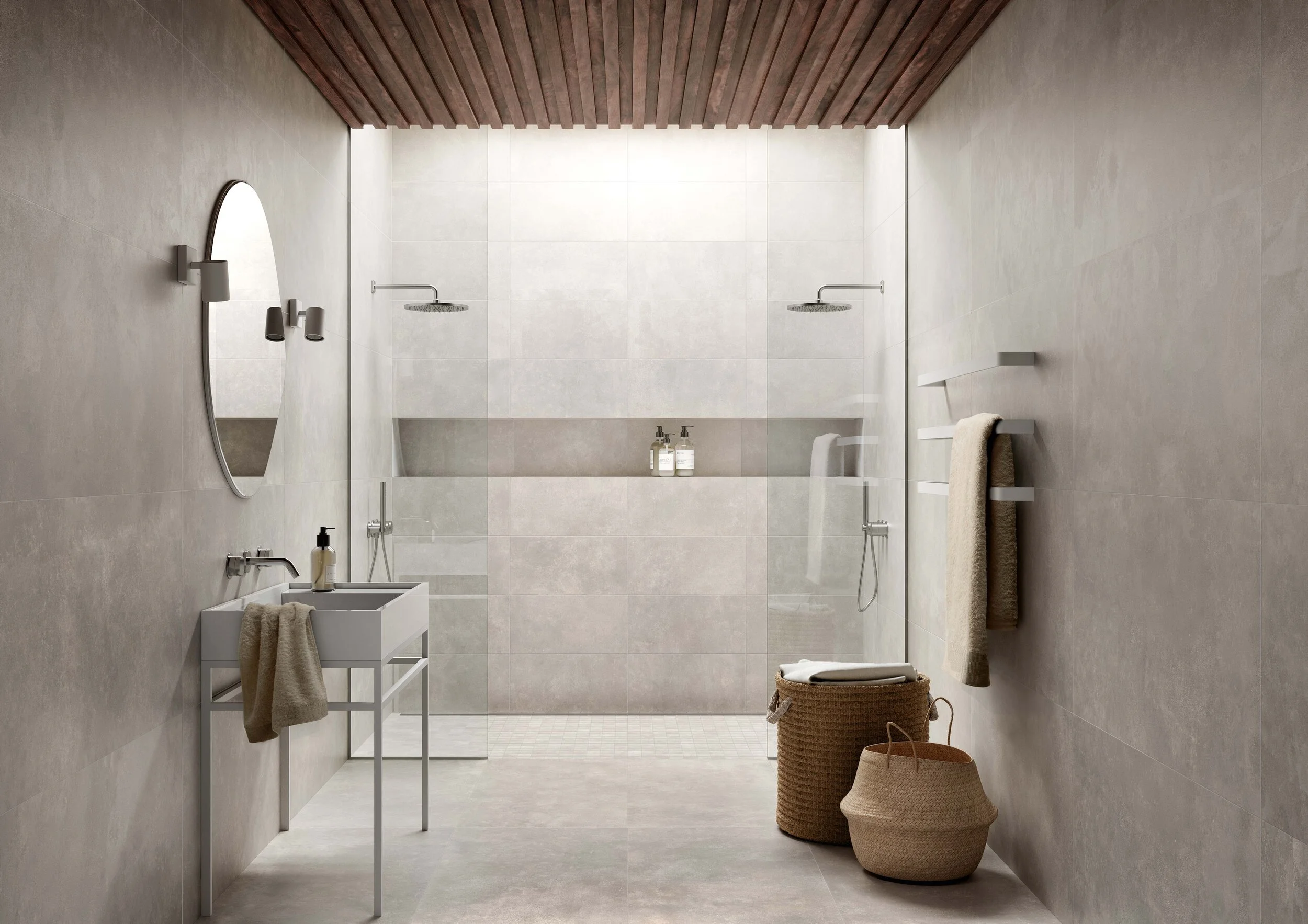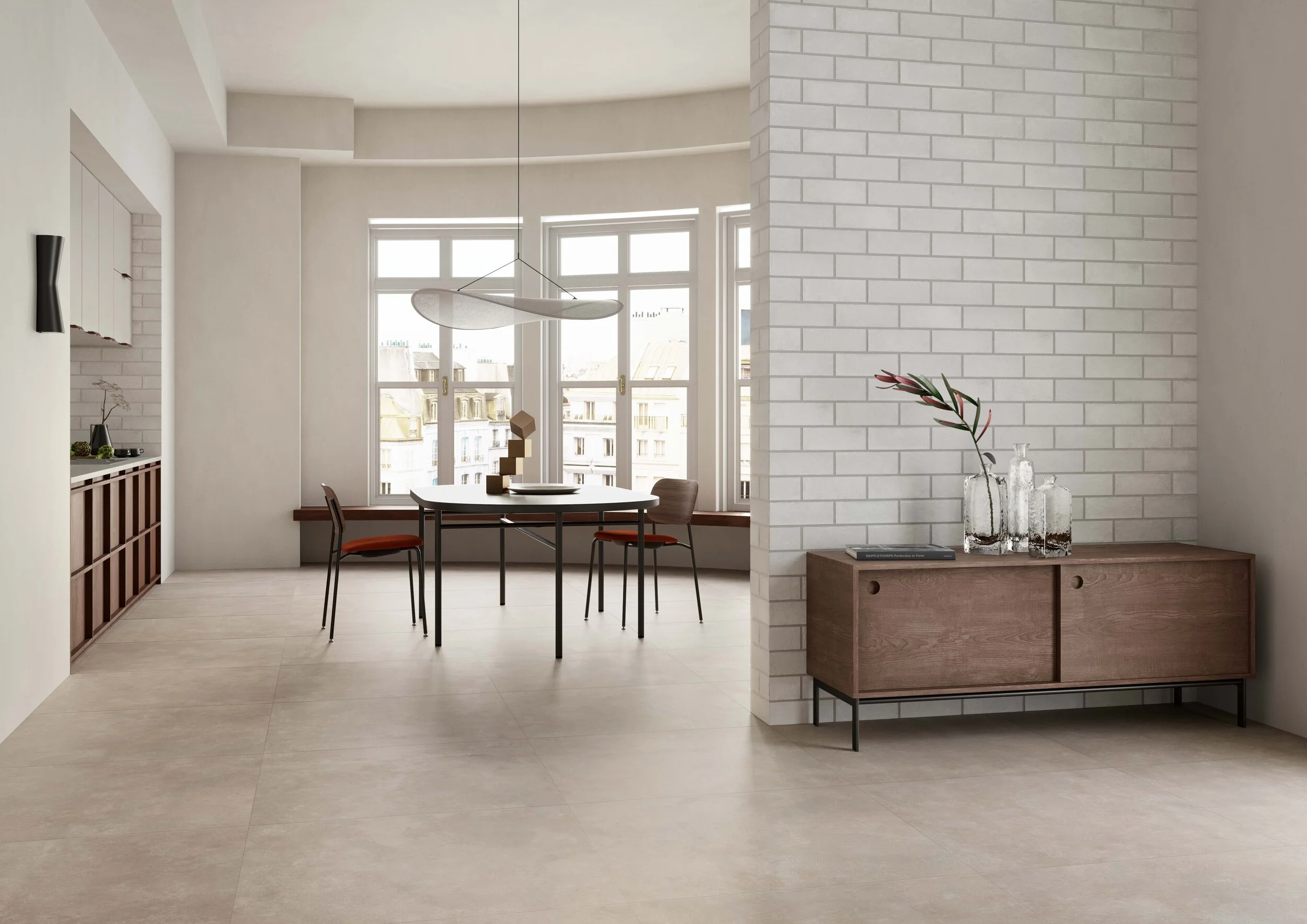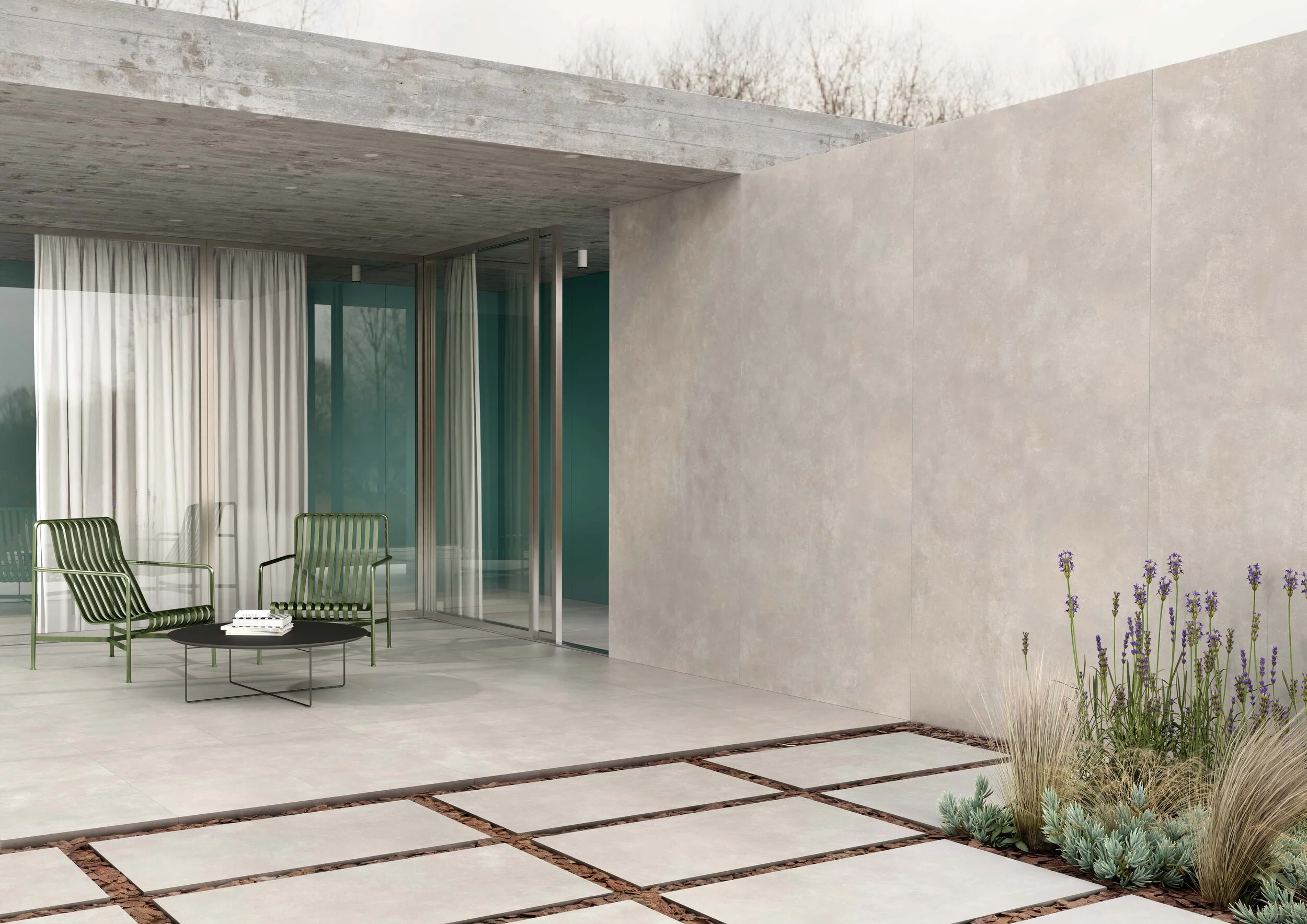Concrete Effect Tiles: Get The Look Without All The Cons Of Real Concrete
Sponsored Content: This blog post is a collaboration with Casalgrande Padana. As usual, all thoughts and opinions are my own.
The contemporary look of concrete is again having another moment within popular interior design. It was a staple material for the masculine-tinged Industrial trend of the late 2000s; yet, for 2021, the desired look is lighter, softer and more Scandi in style. Concrete is a wonderful substance - it has detail and interest without relying on texture or pattern and it complements any interior: modern and minimalist design are the perfect companion for concrete, while the neutral backdrop it provides balances out a room full of colourful furnishings. However, there are many downsides to having and installing concrete. A fantastic alternative to getting the look without its cons is to use concrete-effect porcelain stoneware tiles, in place of having real concrete poured into your home.
In collaboration with Casalgrande Padana, I am going to be looking at their new Metropolis collection: concrete-effect porcelain stoneware tiles which offer a soft yet striking concrete-like impact, and discussing why their concrete-effect tiles - suitable for multiple surfaces including both the wall and the floor - might be a better option for most homeowners over traditional concrete.
Walls: Metropolis Graphite by Casalgrande Padana
Squared and rectified, Metropolis offers the opportunity to achieve the modern, urban look of concrete both inside and outside the home. Available in eight varying shades, in eight different formats (from the classic 30x60 cm and 45x90 cm, to the large 60x60 cm, 60x120 cm, 90x90 cm, 120x120 cm and 120x278 cm sizes) and in four different thicknesses (from the thin 6.5 mm to the classic 9 mm and 10 mm, as well as an extra-thick 20 mm version for laying outdoors), it also comes as a series of 30x30 cm mosaics with a 5x5 cm or 5x15 cm tesserae.
Metropolis Mud on the floor and front wall covering.
While concrete poured in your home will be bespoke, you cannot be 100% sure of the colouring and finish until it has been laid and is dry. If, like me, you are the sort of person who spends hours contemplating different tester pots of paint colours for your wall, then it is a much safer choice to go for a concrete-effect tile from a collection that offers a range of shades, enabling you to compare and contrast your favourite colourway. You can also test and mood board tile samples before committing to covering your walls or floor.
Metropolis Greige by Casalgrande Padana is the perfect accompaniment to the far walls painted in a warm neutral as they both have the same base colour and tone.
The Metropolis collection from Casalgrande Padana ranges from a deep graphite to currently popular brown-tinged sand tones, through to more traditional greys and whites that make perfect outdoor garden tiles.
Metropolis Collection: Graphite, Greige, Silver, Sand, Metro, Grey, Mud, White
Metropolis White gives a fresh and inviting pathway into this modern home.
A traditional concrete floor requires a lot of time to set. It will need a minimum of three days once poured and a final screed layer cannot be touched for a least a week. It then cannot be polished for another month (which is a messy job). If you already live in the property or have pets or children, then this is not a realistic option. In opposition, concrete-effect porcelain stoneware tiles only require a day or so for the grout to set.
Metropolis Greige covers the floor in this modern and warm apartment.
The appeal of a concrete floor might be the design of a continuous, undivided flowing surface, but thanks to the rectification process of the Metropolis collection (in which the edges of the tiles are perfectly squared) and the large-scale options (Metropolis largest size is 120x278cm per tile), breaks in surface continuation with Metropolis are hardly detectable. The 6.5mm thickness option also allows you to take the design up and over the walls for a united scheme, if you do not want to mix and match wall and floor tiles.
Metropolis Silver is used on both the floor and walls in this contemporary bathroom. The 6.5mm thickness option allows you to take the design up and over the walls.
Even if a concrete floor is laid by the utmost professionals, movement and burst pipes can all result in cracking, culminating in the whole floor possibly being ruined. Concrete floors are also vulnerable to moisture, whereas the advanced technology of Metropolis offers exceptional mechanical and flexural strength which refrains from cracking and moisture absorption.
Wall & floor: Metropolis Mud
Even though real concrete can also be used with underfloor heating, the required thickness of it means that it is generally cold underfoot. This thickness also results in it being particularly hard, making it not suitable for small children or for those who could hurt themselves from a rather nasty fall. In contrast, Metropolis concrete-effect tiles are softened by a Nuvolato effect (the varying in thickness depending on the traffic the floor is about to experience). Metropolis also offers a non-slip surface, making it a perfect choice both inside and out.
Metropolis Mud provides a warmer flooring option to real concrete in this bedroom.
A concrete floor generally needs to be sealed or waxed every 3-9 months - a tiresome job that can often be forgotten with a hectic and busy lifestyle. Alternatively, just use water and normal neutral detergents suitable for ceramic surfaces on Metropolis concrete-effect porcelain stoneware tiles (as and when required) which will keep them looking fresh for years to come!
Metropolis Sand on the floor
For more information on the new Metropolis collection from Casalgrande Padana, including a colour cart, sizing and retailers, please click here to be taken to their website. All imagery used in this article belongs to and is used with the kind permission of Casalgrande Padana.
















